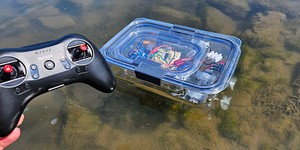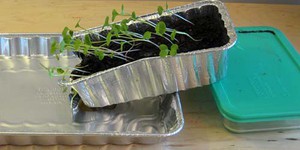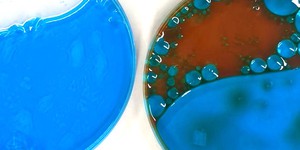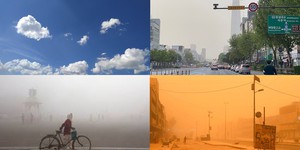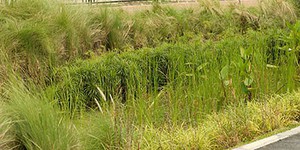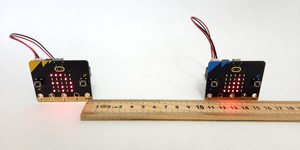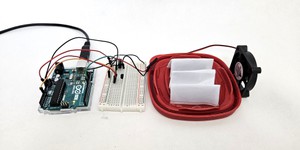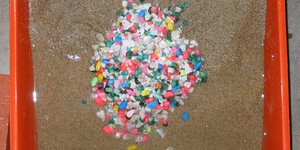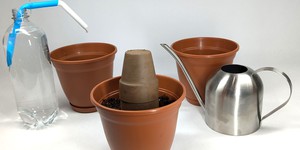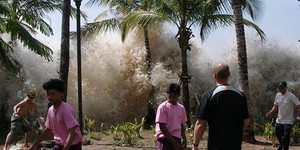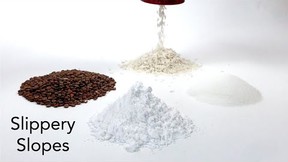Sustainable Cities and Communities Science Projects (44 results)
The United Nations Sustainable Development Goals (UNSDGs) are a blueprint to achieve a better and more sustainable future for all.
These projects explore topics key to Sustainable Cities and Communities: Make cities inclusive, safe, resilient and sustainable.
These projects explore topics key to Sustainable Cities and Communities: Make cities inclusive, safe, resilient and sustainable.
|
Select a resource
Coding Projects
Sort by
|
Do you like playing with radio-controlled (RC) toys like cars, planes, and boats? What if you could build and customize your own? In this engineering project, you will learn how to build your own RC boat using an Arduino and a plastic food storage container.
Read more
Soil erosion can cost the world billions of dollars every year by washing pollutants into our streams and rivers and by causing the loss of farmland. What can you do about this problem? Help save the world (and some money!) with nothing more than a few plants!
Read more
New
Have you ever walked next to your favorite ocean, lake, or creek and seen plastic waste everywhere? Have you ever thought about how much plastic breaks down into microplastics and pollutes waterways? Scientists are coming up with new ways to remove these microplastics from our waterways, and now you can test them out for yourself at home.
Read more
Air pollution is a growing issue, especially in cities, due to the rise of industrial activities, increased fossil fuel consumption from things like car use, and natural events like wildfires. This pollution is measured by the Air Quality Index (AQI), which shows how clean or polluted the air is. But what if we could predict changes in AQI to help communities plan ahead to protect people who are at risk from air pollution? That’s where machine learning comes in. In this project, you will…
Read more
What looks pretty, stops flooding, and helps fight pollution? A rain garden! Find out how by building and testing your own miniature rain garden in a plastic bottle.
Read more
HELP! Locating survivors trapped under rubble is a difficult and dangerous task. After a natural disaster, like an earthquake, rescuers must act quickly to save as many lives as possible. They can use robots with different types of sensors to help find survivors. In this project you will build a sound-tracking robot that can use two microphones to drive toward a sound source. Designing the robot's algorithm will be up to you.
Read more
New
Are you ever annoyed by a poor Wi-Fi signal? What about when you try to send a text message, and it just won't go through because of poor cell service? Have you ever wondered what factors affect the strength of your signal and the speed of the connection? If so, this project is for you!
Read more
You probably know that sweat helps cool your skin on a hot day because of evaporation. But do you think you can use evaporation to cool a building? Evaporative cooling systems could provide a more environmentally-friendly alternative to traditional air conditioning. In this engineering project you will build and try to optimize your own model evaporative cooling system.
Read more
A day at the beach is a wonderful way to spend time with your family and friends. You can swim, play games, and build sand castles. But have you ever thought about how all of that sand got there and wondered why the shoreline weaves in and out of the ocean? In this science project, you will investigate how ocean waves build beaches by making a model of the beach and shoreline. All you need is a tiny surfer and a beach volleyball court for your model, and you can imagine that you are in…
Read more
Do you ever use plastic wrap to cover a container? Did you know that it is made of plastic, which significantly contributes to the amount of waste in our landfills? There are many alternatives to plastic, and one popular product is beeswax wraps. Are beeswax wraps a suitable replacement for plastic wrap? Find out in this experiment!
Read more
With heat waves impacting the world globally, many gardeners, farmers, and scientists are turning to passive irrigation systems that reduce fossil fuel emissions while keeping plants well-watered and alive in the sweltering heat. In this science experiment, you will compare and contrast the effectiveness of passive irrigation systems compared to traditional surface irrigation systems and their impact on overall plant growth.
Read more
A tsunami is a series of waves made in a body of water, like the ocean, that can cause serious destruction when they hit the coastline. In deep water, a wave can be just a few feet high and travel very fast. As it nears the coastline, and moves into shallower water, tsunamis usually slow down, but the wave height can grow to 100 feet! In this ocean science project, you will model a tsunami and investigate how wave velocity (speed) depends on water depth. Does it match the mathematical equation…
Read more
|


